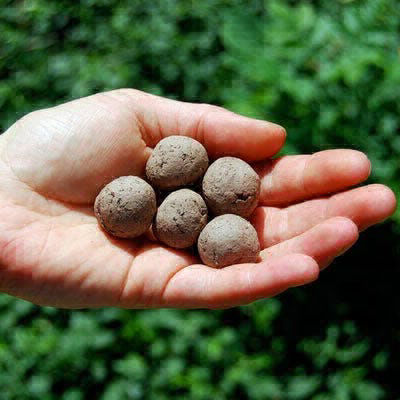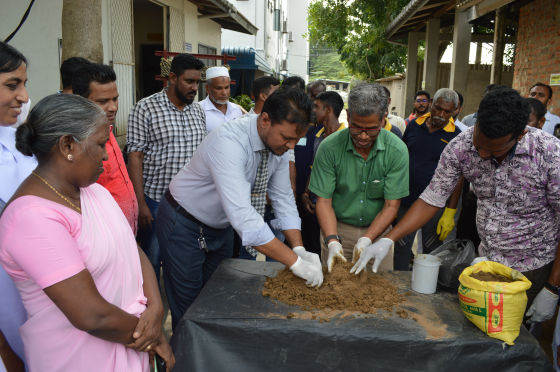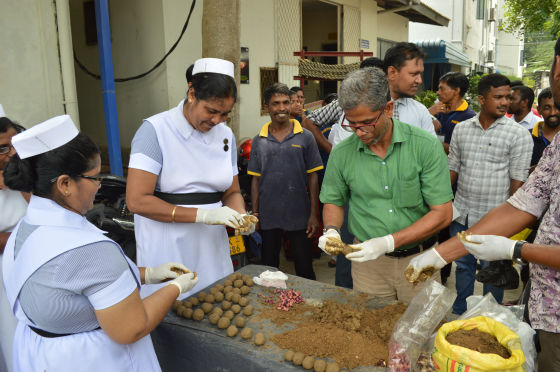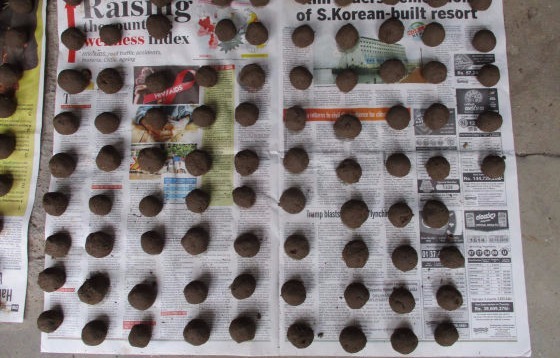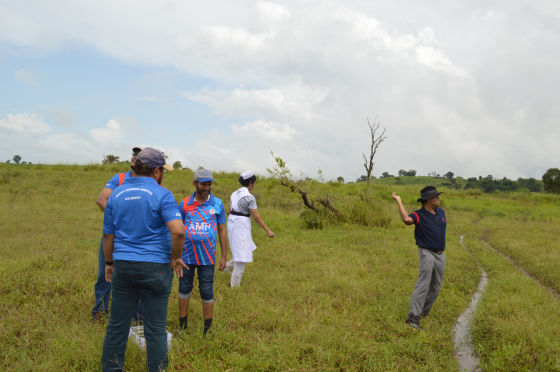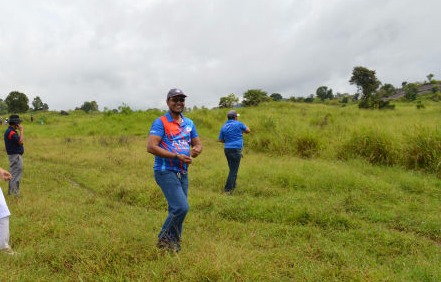What are Seed Balls? !
A seed ball (or seed bomb) is a seed that has been wrapped in soil materials, usually a mixture of clay and compost, and then dried. Essentially, the seed is ‘pre-planted’ and can be sown by depositing the seed ball anywhere suitable for the species, keeping the seed safely until the proper germination window arises. Seed balls are an easy and sustainable way to cultivate plants in a way that provides a larger window of time when the sowing can occur. They also are a convenient dispersal mechanism for guerrilla gardeners and people with achy backs.
